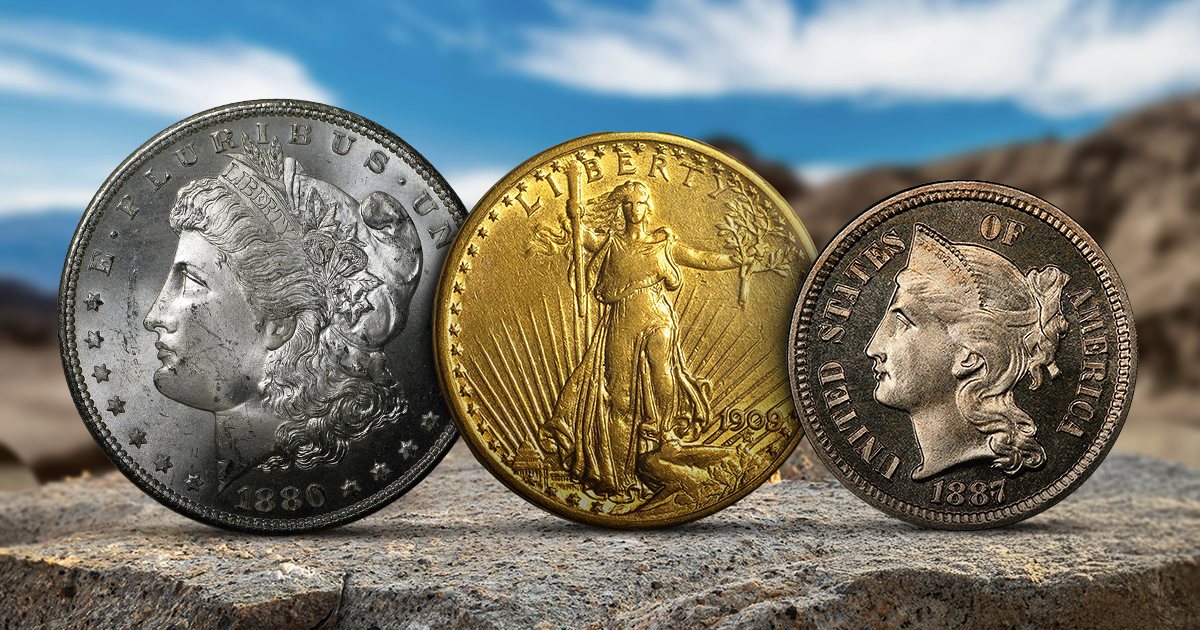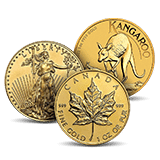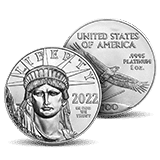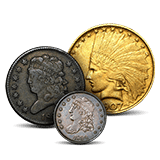
An overdate coin is a coin variety in which the date shows visible traces of an earlier year. This occurs when a mint modifies an existing die by engraving or punching a new date over the old date. Coins struck from such dies show overlapping or partially visible digits from two different years.
How Overdates Occur in Die Preparation
Die Preparation and Modification
Coin dies are made of steel and engraved with a coin design, which includes the date. Before the 20th century, dates were hand-punched or engraved into each working die. When a new year began, rather than making a new die, mints often modified the existing one, using one of the following methods:
- Over-Punching: The new date was punched directly over the previous year’s digits. If it was not perfectly aligned or if the old date was not fully removed, remnants of the earlier date remained visible.
- Partial Erasure: Engravers sometimes filed down or partially erased the old date before adding the new one. Because die steel is hard and engravers used basic tools, complete removal of old digits was challenging, often leaving shadows visible.
- Die Re-Working: Misalignment, uneven pressure, or incomplete removal of the previous date could all result in a visible overdate on coins struck from the modified die.
Technological Evolutions in Die Production
With the advent of mechanized die production and, later, computer-aided engraving, the frequency of overdates declined sharply. By 1909, the U.S. Mint had incorporated the date into the master die or hub, eliminating the need for hand-punching dates into individual working dies and making traditional overdates virtually impossible in regular coinage.
Regional and Global Variations
Overdates are most prevalent in series and regions where die reuse was standard. Early U.S. copper coins, British pennies and halfpennies, and Spanish colonial issues are notable.
Types of Overdates
Full Overdates
The earlier date is largely visible beneath the new date, with most digits discernible.
Partial Overdates
Only fragments of the previous year’s digits are visible, such as the tail or curve of a number.
Subtle Overdates
The remnants of the earlier date are faint and may require magnification to detect.
Understanding the different forms overdates take is key to successfully identifying them in the field.
Identifying and Authenticating Overdate Coins
- Look for Double or Overlapping Numerals: Shadows, partial digits, or doubled numbers in the date are telltale signs.
- Use Lighting and Angles: Tilting the coin reveals raised or recessed areas that indicate there are two dates.
Overdates vs. Other Die Varieties and Errors
- Double Dies: Result from a die being impressed twice by the hub, creating a doubled image but not involving two different years.
- Repunched Dates: The same year’s digits are punched more than once, causing a shadow effect.
- Die Cracks and Cuds: Result from die wear or damage, not from date modification.
- Key Difference: Overdates specifically involve two different years’ dates on the same coin.
Notable Examples of Overdate Coins
| Coin Variety | Description/Notes |
| 1795/4 Large Cent | “5” over “4” visible |
| 1942/1 Mercury Dime | “2” over “1” in date |
| 1909/8 Double Eagle | Unique 20th-century overdate |
| 1797/6 British Halfpenny | “7” over “6” in date |
| Spanish Colonial Reales | Multiple overdates due to die reuse |
Common Misconceptions
- Not All Double Dates Are Overdates: Some are repunched dates or double dies without involving two different years.
- Not All Overdates Are Errors: Many were intentional, practical responses to minting constraints.
- Value Depends on Rarity and Condition: Some overdates are common and not especially valuable.
Why Certain Overdates Spike in Value
- Rarity: Fewer surviving examples, especially in high grades, increase demand.
- Historical Significance: Overdates from historically important years or mints attract more interest.
- Collector Interest: Some overdates are legendary among specialists, driving up prices.
Auction Results and Price Ranges
- 1918/7-D Buffalo Nickel: Auctioned for as much as $250,000 in MS-65. Grades as low as Fine-12 have sold for more than $1,000
- 1942/1 Mercury Dime: High-grade examples have sold for $10,000–$15,000. Circulated coins often bring $300–$7,000.
Overdates provide a glimpse into the past, illuminating the minting practices, economic constraints, and technological limitations the U.S. Mint faced in its early years. Their unique visual features and historical context provide insight into the evolution of coin production.




